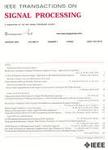版权所有:内蒙古大学图书馆 技术提供:维普资讯• 智图
内蒙古自治区呼和浩特市赛罕区大学西街235号 邮编: 010021

作者机构:Xi An Jiao Tong Univ Sch Math & Stat Xian 710049 Peoples R China Xi An Jiao Tong Univ Pengcheng Lab Pazhou Lab Huangpu Xian 710049 Peoples R China Imperial Coll London Dept Elect & Elect Engn London SW7 2BX England
出 版 物:《IEEE TRANSACTIONS ON SIGNAL PROCESSING》 (IEEE Trans Signal Process)
年 卷 期:2022年第70卷
页 面:4483-4497页
核心收录:
基 金:Fundamental Research Funds for the Central Universities [xzy022021046] National Natural Science Foundation of China [11991023, 62076197] Major Project of National Science Foundation ofChina [U1811461] National Key R&D Program of China [2020YFA0713900] Fundamental Mathematical Theory of Network Communication Major Key Project of PCL [PCL2021A12] Joint Project of Industries and Universities Shaanxi [S2021-YF-GXZD 0076]
主 题:Channel estimation MIMO communication Detectors Signal detection Deep learning Signal processing algorithms Neural networks Channel estimation deep learning joint estimation learning to learn MIMO signal detection model-driven
摘 要:To overcome the influence of channel estimation error on signal detection, this paper presents a model-driven deep learning method for joint channel estimation and signal detection in multiple-input multiple-output (MIMO) wireless communication systems. To improve the robustness of the method, we use the Student s t-distribution to model the environment noise, and model the joint problem probabilistically by taking the channel state information (CSI) as a latent variable, then derive a generalized expectation maximization (GEM) algorithm to fit the model. In GEM, the expectation step is used for robust CSI estimation while the maximization step detects the transmitted signal with the estimated CSI. To reduce the computational complexity of GEM, we unfold it into a deep neural network. The network contains only a few trainable parameters, which is easy to train and has low space complexity. Based on our experimental results, we find that the proposed GEM algorithm outperforms a variety of signal detection algorithms which take the CSI estimation and signal detection as independent modules. Further, we find empirically that the proposed GEM network outperforms state-of-the-art deep learning based joint channel estimation and signal detection methods and has a good generalization ability against the number of antennas, the modulation mode, the level of signal-to-noise ratio and channel correlation.